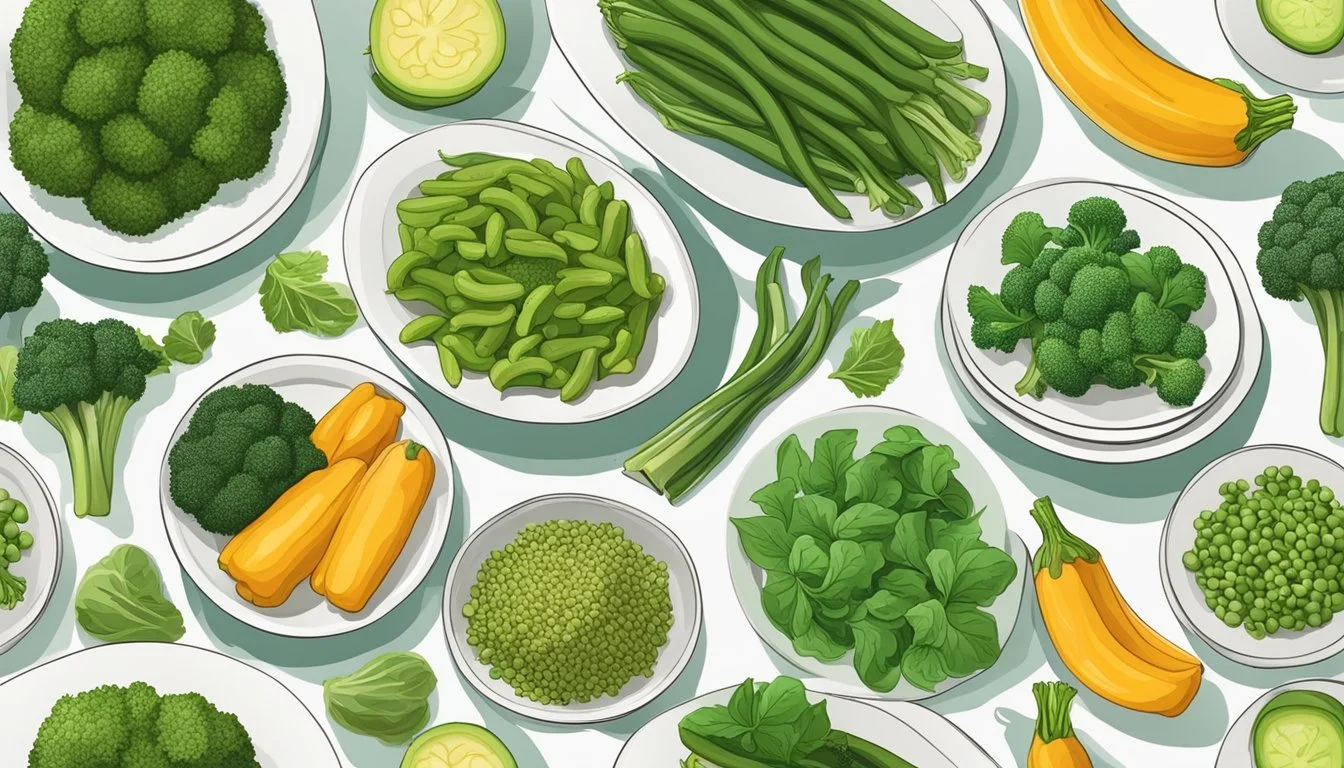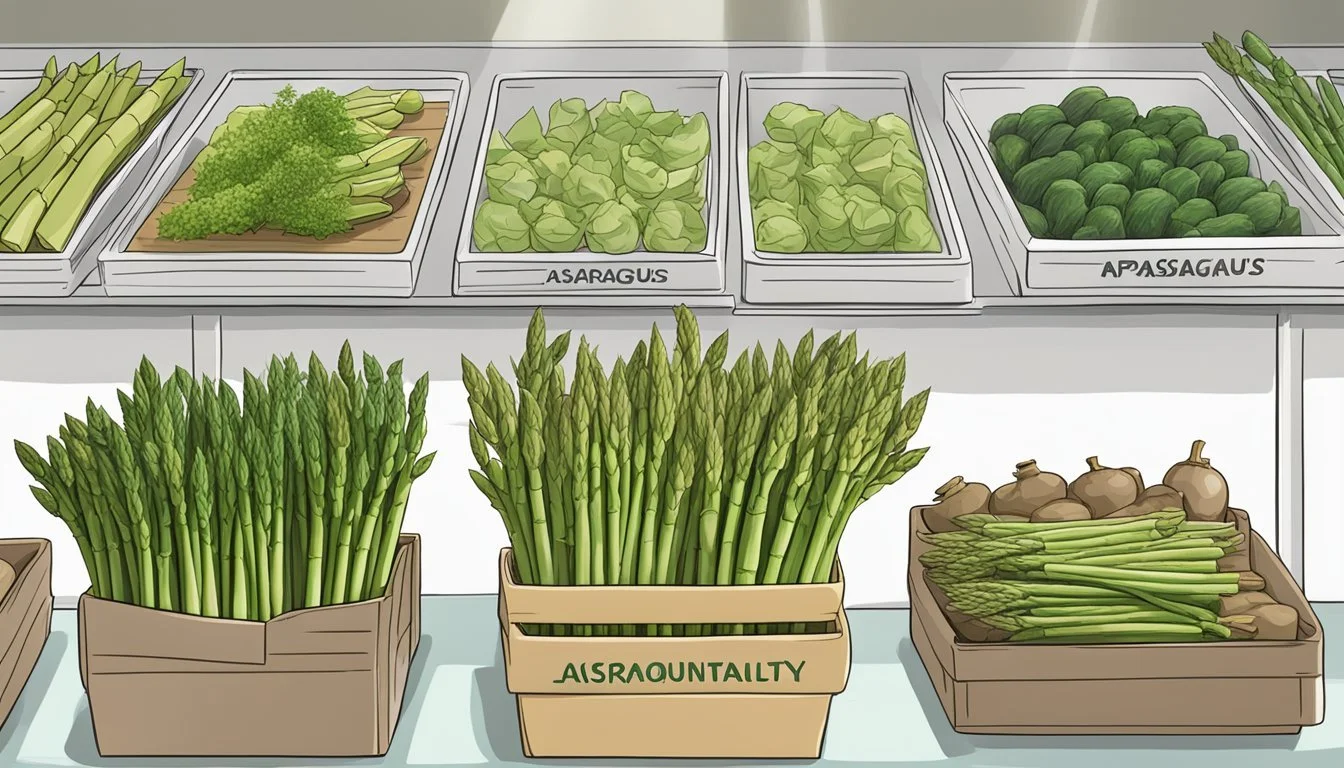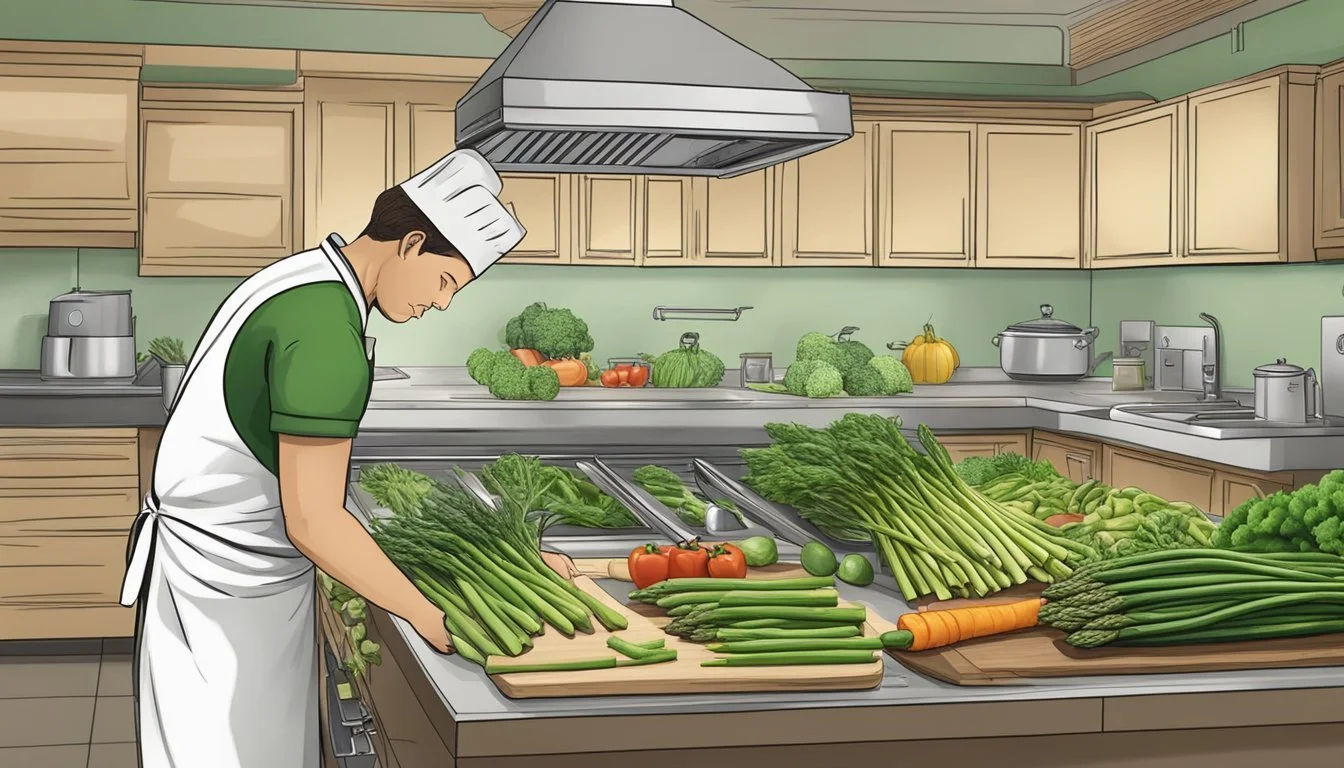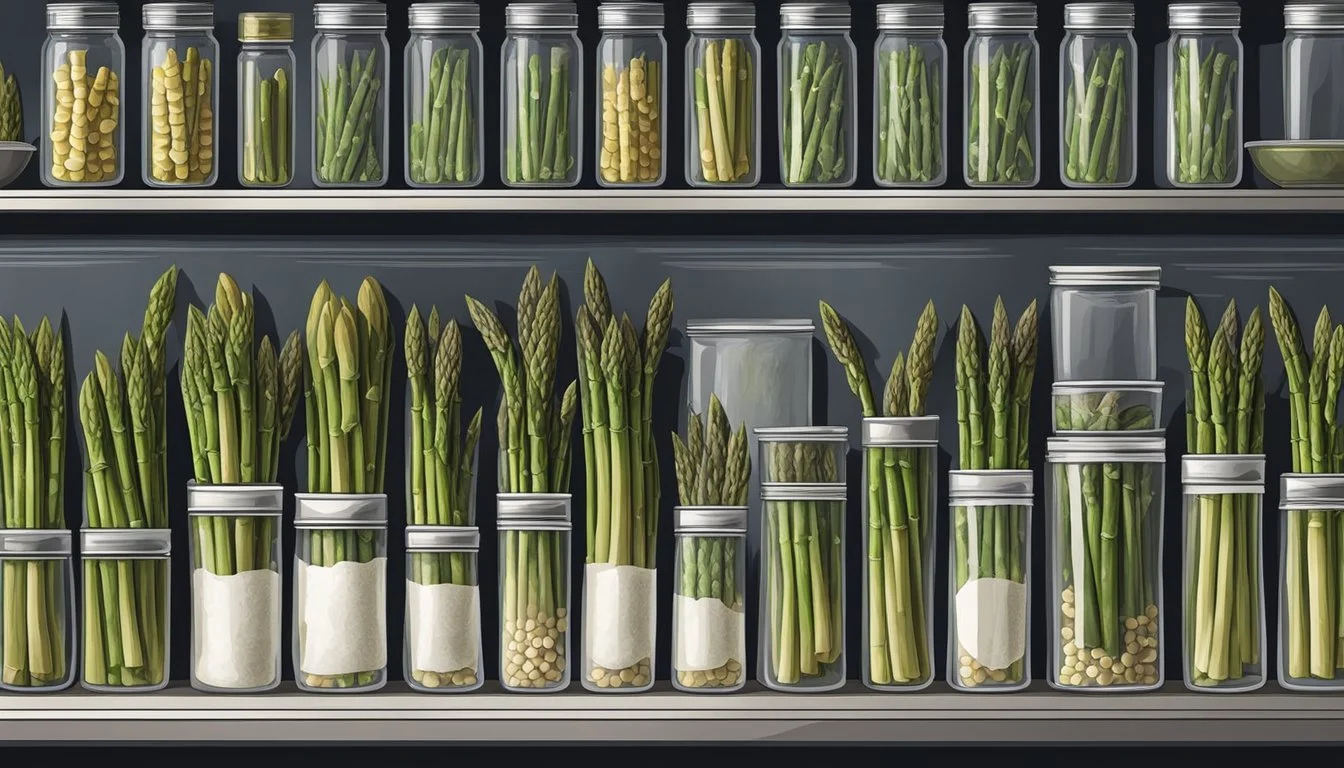Asparagus Substitutes
Top Alternatives for Your Recipes
Asparagus is a vibrant green vegetable often associated with spring, renowned for its unique, earthy taste and health benefits that include a high content of vitamins K and B9 (folate), as well as essential minerals. Not only does it bring a fresh element to a variety of dishes, from simple salads to sophisticated entrées, but its nutritional profile also makes it a favored choice for a healthy diet. However, there are times when asparagus might not be available, or someone may seek alternatives due to dietary preferences or simply for a change in texture or flavor in their meals.
In the search for substitutes that can mimic or complement the characteristics of asparagus, several vegetables come to the forefront. Broccoli, with its similarly earthy and slightly bitter taste, is one such substitute, offering comparable health benefits like high fiber content and rich vitamin and mineral profiles. Likewise, celery, often hailed for its high water content and crisp texture, serves as another alternative; when cooked, it develops a sweetness that echoes the mild flavor of asparagus. These substitutes not only fill the gap when asparagus is off the menu but also add their own unique qualities to dishes, ensuring variety and nutritional diversity on the plate.
Understanding Asparagus
Asparagus is heralded for its unique flavor and impressive nutritional profile, often playing a versatile role in a wide array of culinary applications.
Nutritional Profile
Asparagus stands out as a nutrient-dense vegetable. It is an excellent source of fiber, which is essential for digestive health. Additionally, asparagus contains notable amounts of potassium, and is rich in vitamins, including vitamin A, vitamin C, and vitamin K. It's also a good source of folate, which is important for cell growth. Here is a brief overview of the key nutrients per 100g serving:
Fiber: ~2.1g
Potassium: ~202mg
Vitamin A: 15% of the RDI
Vitamin C: 6% of the RDI
Folate (Vitamin B9): ~34% of the RDI
Iron: ~16% of the RDI
Calcium: ~2% of the RDI
Magnesium: ~4% of the RDI
Vitamin K: ~40% of the RDI
Protein: ~2.2g
Asparagus also contains various antioxidants, which help neutralize free radicals and may contribute to overall health.
Culinary Uses
The distinct flavor of asparagus is often described as earthy and slightly grassy, with a hint of nuttiness when cooked. Its texture varies: it can be crispy when lightly cooked and tender when more fully cooked. As a vegan-friendly ingredient, asparagus can be prepared through various cooking methods such as steaming, sautéing, roasting, and grilling. To enhance its flavor, lemon juice is commonly squeezed over cooked asparagus.
In recipes, asparagus is quite versatile. It can be eaten alone as a side dish or incorporated into salads, pastas, and stir-fry dishes. The cooking method chosen, whether it be roasting to caramelize its natural sugars, grilling for a smoky flavor, or steaming for a crisp texture, greatly impacts the final taste and presentation of the dish.
Asparagus’s ability to absorb flavors well also makes it ideal for pairing with various herbs and spices. Whether integrated into a complex recipe or simply dressed with olive oil and seasoning, it holds its own as a vegetable that can elevate any meal it accompanies.
Asparagus Seasonality and Selection
Choosing the right asparagus involves understanding its peak seasonality and discerning the freshness of the spears. The ideal selection ensures a flavorful and nutritious addition to meals.
Best Season to Enjoy
Asparagus thrives primarily during the spring months. Though available year-round in many grocery stores due to global imports, asparagus is at its best in the spring when it's harvested locally. The prime months are typically April through June, with variations depending on the regional climate. In Europe, for instance, the season may begin earlier, and white asparagus is celebrated as a delicacy during this time.
Peak Season: April - June
Colors: Green predominantly, but also white and purple varieties
Choosing Fresh Asparagus
When selecting fresh asparagus at the store, one should look for firm, bright green spears with tight, closed tips. The size, whether thin or thick, doesn't necessarily indicate quality, as both can be tender and flavorful if the asparagus is fresh.
Texture: Firm, not limp
Appearance: Bright green with closed tips
Avoid: Spears with woody ends or dry, split stalks
One should store fresh asparagus by trimming the ends and keeping them moist in the refrigerator to maintain freshness until cooking.
Preparation and Cooking Tips
When substituting asparagus, one should consider that the preparation techniques and cooking methods can greatly influence the flavor and texture of the dish. Careful trimming and cleaning are essential, as is selecting the correct cooking technique and seasoning combination to enhance the natural qualities of the substitute vegetables.
Trimming and Cleaning
Prior to cooking, vegetables should be properly trimmed and cleaned. Broccoli, a common asparagus substitute, requires the removal of its woody stems. One should cut the florets from the main stalk and rinse them under cold water to remove any dirt. This process is crucial for ensuring the vegetable cooks evenly and retains a pleasant texture.
Cooking Techniques
A variety of cooking methods are available which preserve the integrity of the vegetables’ flavors and textures:
Boiling and Steaming: For a quick and healthy option, boiling or steaming the vegetables until just tender can be very effective. Ensure the water does not completely submerge the vegetable when steaming to avoid sogginess.
Sautéing: Vegetables can be sautéed in a small amount of olive oil or vegetable oil for a crisp exterior and tender interior. This method brings out a rich flavor, especially when combined with garlic.
Oven-Roasting and Grilling: Roasting or grilling enhances natural sweetness and adds a smoky note. A hot oven (around 400°F) or preheated grill will result in a crispy texture.
Stir-Fry: A quick stir-fry with sesame oil can yield tender-crisp results, perfect for a side dish or part of a main course.
Seasoning Combinations
The right seasoning can elevate the vegetable to a new level:
Salt and Pepper: A fundamental seasoning duo that enhances the natural taste of any vegetable.
Garlic: Adds a pungent kick, pairing well with milder vegetables.
Lemon: A squeeze of lemon juice provides a bright, acidic contrast which complements the earthy tones of many green vegetables.
Olive Oil: Good quality olive oil not only helps in cooking but also adds a subtle depth to the overall flavor.
In summary, the substitute for asparagus should be treated with care from trimming to the final seasonings to ensure the best flavor and texture in the finished dish.
Substitute Options for Asparagus
When a recipe calls for asparagus, various alternatives can deliver similar flavors or textures, accommodate green veggie substitutes, or offer unique takes on the dish.
Similar Flavor and Texture
For those seeking substitutes that closely mimic asparagus in both flavor and taste, a few green vegetables stand out. Broccoli and broccolini share the earthy and slightly bitter taste profile of asparagus, with broccolini being slightly sweeter and tenderer, akin to asparagus stalks. Both can be steamed, roasted, or grilled like asparagus. Green beans and sugar snap peas also align in texture but are a bit sweeter in taste.
Alternative Greens
Several greens can step in for asparagus if the recipe demands. A simple table lists options that are commonly available and can suit a variety of dishes:
Substitute Preparation Method Notes Kale Sauté, steam Rich in flavor, hearty texture Spinach Sauté, steam, raw in salad Milder taste, wilts quickly Lettuce Raw in salad Crisp texture, various varieties offer different tastes
Green peas and Brussels sprouts can bring a pop of green and a pleasant bite to any plate. These greens can be easily sautéed or mixed into salads, much like asparagus.
Unique Substitutes
In addition to green vegetables, there are unique substitutes that can offer a diverse range of flavors. Leeks have a mild onion-like taste and can be a flavorful addition to dishes. Celery, with its crisp texture, can also serve as a refreshing alternative, especially in salads. Mushrooms, while not a green vegetable, can replace asparagus to bring an earthy flavor and meaty texture to a dish.
Incorporating Substitutes Into Dishes
When asparagus is not available or desirable, several other vegetables can provide comparable texture and flavor to various dishes. This section outlines how to integrate these substitutes specifically into salads, soups, stews, and main courses.
Salads and Cold Dishes
For salads and cold dishes where crispness is key, lettuce offers a refreshing crunch and is a go-to substitute for raw asparagus. A classic green salad can be elevated by including thinly sliced leeks or green bell pepper. To embody the tenderness of blanched asparagus, consider using lightly steamed brussels sprouts, which maintain a bit of bite and a subtle, earthy flavor profile.
Lemon zest or juice adds a bright note, complementing the mild flavors of the vegetables.
Creamy burrata pairs seamlessly with these substitutes in similar ways that it would with asparagus, notably in leafy salads.
Hearty Soups and Stews
In heartier dishes like soups and stews, vegetables with body and the ability to absorb flavors well, such as zucchini and leeks, work well. These substitutes can withstand longer cooking times without losing their integrity.
Zucchini: Can be diced and added to stews or sliced thinly for soups, after being sautéed with seasonings to enhance its buttery texture.
Leeks: Offer a subtle onion-like flavor; they should be cleaned thoroughly and sliced before incorporating into the broth of stews and soups.
Main Courses
For main courses, whether grilling for a barbecue or sautéing for an elegant dish, robust vegetables like green bell peppers are excellent for grilling, while zucchini can be sliced and dressed up for sautéing. Lean meats or fish can fill in for asparagus by providing a substantial texture and flavor when seasoned and cooked properly.
For vegans and vegetarians, grilled or sautéed tofu can act as a protein-centric stand-in, offering a different but satisfying experience.
Incorporating these substitutes allows dishes to maintain balance and complexity of flavor without relying on asparagus.
Storing and Preserving Substitutes
Proper storage and preservation methods are crucial for maintaining the freshness and quality of asparagus substitutes. These practices extend the shelf life and ensure that substitutes retain their nutritional value and flavor profile.
Refrigeration and Freezing
For immediate use, refrigeration is the best option to keep asparagus substitutes fresh. Vegetables similar to asparagus, such as green beans or broccoli, should be kept in a crisper drawer at a high humidity level. For longer storage, freezing is ideal. Here is a simple guide:
Blanching: Substitutes should be blanched before freezing to preserve flavor and texture. Blanching time varies depending on the vegetable but typically ranges from 2 to 4 minutes.
Cooling: Immediately place blanched substitutes into ice water to halt the cooking process.
Drying: Pat dry thoroughly to prevent ice crystals.
Freezing: Freeze in a single layer on a baking sheet before transferring to an airtight container to avoid clumping.
Canning and Pickling
Canning provides a way to store asparagus substitutes for months. The high-acid environment of the canning process prevents bacterial growth, enabling safe storage. Here’s what one should know for canning:
Acid: Adding lemon juice or vinegar ensures the pH level is safe for canning.
Process: Use a pressure canner for low-acid substitutes and a water bath for those with higher acidity.
Pickling is another preservation method that infuses the substitutes with flavors and extends their shelf life significantly. The key ingredients include:
Vinegar: Acts as a preservative and flavor agent.
Seasonings: Garlic, dill, and mustard seed are common for a classic pickling brine.
Remember, each substitute may have specific storage and preservation needs, but these general guidelines cover the fundamental practices for keeping them fresh and safe to consume.
Health Considerations
When considering substitutes for asparagus, one must take into account the health implications, particularly for individuals with dietary restrictions or allergies and sensitivities. The selection of an alternative should align with one's nutritional needs and any specific health considerations.
Dietary Restrictions
Vegans and Vegetarians: Opting for green beans as a replacement provides similar dietary fiber, which is crucial for digestion. Green beans offer 2.7 grams of fiber per 100 grams, slightly higher than asparagus's 2.1 grams, catering well to those seeking plant-based diet options rich in this nutrient.
Fiber Content:
Asparagus (per 100g): 2.1g
Green Beans (per 100g): 2.7g
Folic Acid: Asparagus is known for its folic acid content, a consideration for pregnant women or those planning to conceive. One should seek alternatives like citrus fruits or leafy greens, which are also strong sources of folic acid.
Allergies and Sensitivities
Allergens: Although uncommon, asparagus can cause allergic reactions in some individuals. It is important to choose substitutes that do not trigger allergies, keeping in mind common allergens such as nuts, soy, and gluten.
Common Allergies: nuts, soy, gluten
Recommended Substitutes: zucchini, broccoli, or similar vegetables known for low allergenic properties
Individuals with specific food sensitivities should also consider the potential for cross-reactivity with other vegetables. Consulting with a healthcare provider or an allergist can guide the selection of a suitable alternative to asparagus that does not compromise their well-being.
Cultural Significance
The cultural significance of asparagus extends far beyond its role as a food item. It has historical roots and is a celebrated ingredient in various cuisines around the world.
Historical Context
Asparagus has been esteemed since ancient times, regarded not only for its culinary value but also for its medicinal properties. In Europe, it has been a delicacy since the Roman era, indicative of its deep-seated cultural roots. The reverence for asparagus can be observed in the annual traditions and festivities, particularly in Germany where white asparagus, known as "white gold," is celebrated vigorously during its season.
Asparagus in World Cuisines
The culinary influence of asparagus is worldwide, with various cultures incorporating these green sticks into their traditional dishes. European cuisines, notably in Germany, cherish white asparagus and incorporate it into a myriad of recipes, highlighting its position as a springtime favorite.
France: Known for incorporating asparagus into sophisticated dishes like creamy soups and as an accompaniment to meats.
Italy: Features green asparagus in risottos and pastas, sautéed with a touch of garlic and olive oil.
China: Introduces a unique variety known as "asparagus lettuce" in stir-fries and salads, exemplifying its versatility.
United States: Often grills or roasts the vegetable, emphasizing its chargrilled flavor.
By understanding its cultural significance, one can appreciate asparagus not just as a vegetable, but as a historical and culinary icon.








